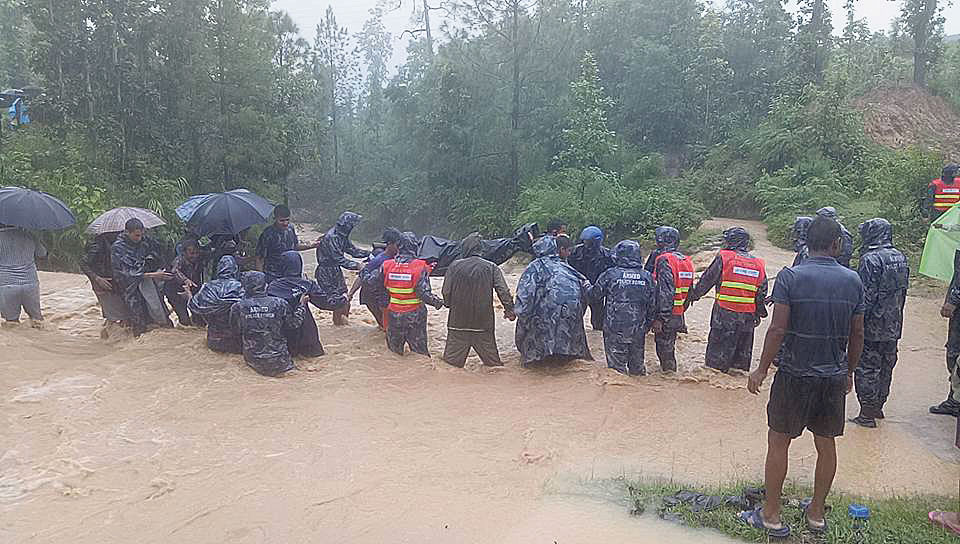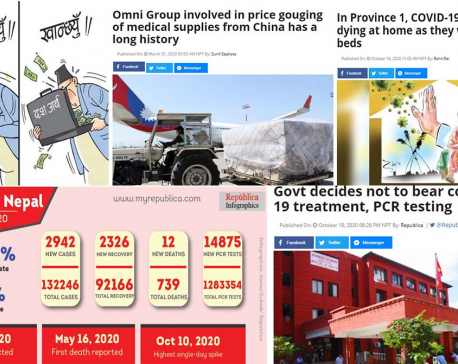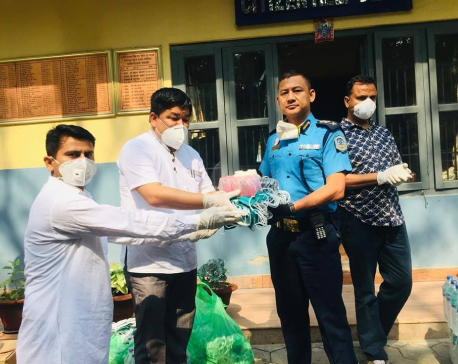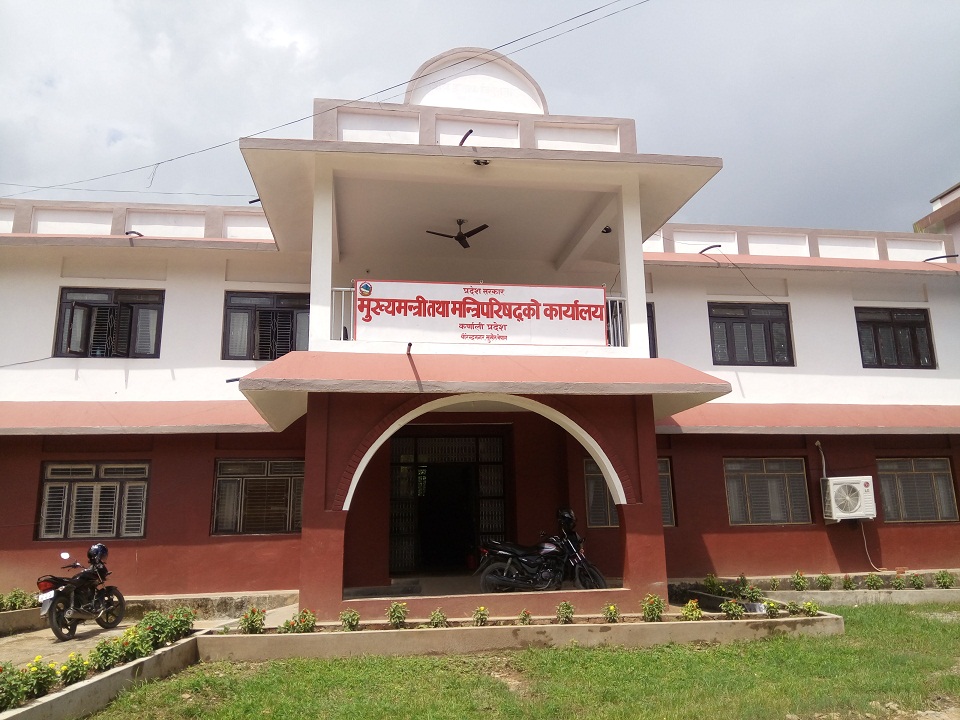
OR
Managing monsoon floods amid COVID-19
Published On: June 11, 2020 03:00 PM NPT By: Suman Kumar Karna


Suman Kumar Karna
The author is Urban Governance and Disaster Risk Reduction Specialistnews@myrepublica.com
More from Author
Ways of coping with monsoon floods and landslides in the middle of the COVID-19 response will have to be entirely different in approach, action and delivery.
Monsoon is just at the doorstep. Few towns and cities are already submerged. The coming days are going to be more tough and cruel. This year we are in no different condition. The situation is rather worse. We have to prepare and fight multiple disasters, while we are already threatened by COVID-19 pandemic.
Although the COVID-19 is a global pandemic its impact is very local. Even within the same geographical area, it impacts different people differently. It is therefore imperative that we focus on target groups and tailor our supports accordingly. At some point of time, there may be a situation, when we will be dealing simultaneously in all three phases (response, recovery and development) of risk management within the same district, province and the country.
It is important to note that our three major provinces (2, 5 and 7) are worst hit by the COVID-19, also because of the open Indian border and our meagre and ordinary preparedness. Our government has shown little appetite and farsightedness to establish better coordination and collaboration with the provincial and local governments in building necessary infrastructures and facilities for guaranteeing full-proof management of Nepali citizens entering into Nepal.
Now unfortunately the same three provinces (2,5 and 7) are also profoundly exposed to the possible threat of monsoon flooding. Once again, Tarai is going to suffer. Local governments are overwhelmingly concentrating on the pandemic, which is a priority issue to address. But we also have no choice to simultaneously deal with floods, landslides, snake bites and other conventional disaster risks that may appear with the upcoming monsoon.
Ways of coping with monsoon floods and landslides in the middle of the COVID-19 response will have to be entirely different in approach, action and delivery. The situation will demand a major departure from the conventional method so that common concerns of COVID-19 are also addressed.
With limitation to move and gather at one place and with divided attention and priorities, it will not be easy to conduct household level needs assessment, mobilize and deliver relief and rescue materials, execute safe evacuation, apply social protection measures and leverage other essential supports that are a must in post-flood environment.
As expected, municipalities are rarely finding time to think, discuss and put any efforts towards possible floods, landslides and other risks in their town. Their human resources are already tired and exhausted while their financial resources are also thinning day by day. Other key stakeholders of disaster risk reduction and management like security forces, volunteers, civil society, Red Cross, local NGOs, media, private sector are extensively engaged in COVID-19 response and therefore they also need to be reinforced and reenergized, before they are mobilized at the time of need. The entire group of stakeholders needs to be appropriately oriented, trained and incentivized, in order to ensure their proactive support in a more coordinated and harmonized manner.
The role of national level authorities, particularly National Disaster Risk Reduction and management Authority (NDRRMA), is critical in view of preparing local bodies and their local partners to better manage the monsoon floods with necessary re-orientation and readjustment in a changed post COVID-19 context. The authority needs to quickly expand its outreach to the provinces and local governments and internalize their local realities and contexts in their central level strategies, planning and programming. The authority should act swiftly and reach out to the hot-spot districts and local governments with a more comprehensive and robust package of support, which also takes the needs of local partners and stakeholders into account.
The package must offer solutions that match both opportunities and challenges of post COVID-19 context. Under the situation of multiple restrictions at varying levels, the cost of post flood emergency response, relief and recovery support will significantly increase. The district and local governments therefore may also need 'special funding' to meet the budget gap (due to CVID-19 response) including increased expenses of relief and recovery support due to change in the local context.
The recent decision of the government in its policy and program is a significant move to elevate our efforts to better fight with COVID-19 situation followed by monsoon triggered floods and landslides in the country. Furthermore, the decision to mobilize DRRM funds is an acknowledgement that the COVID-19 is also a form of disaster and this needs to be managed in an integrated manner under the broader umbrella of Disaster Risk Reduction and Management.
The contribution of these funds will have a noticeable impact on the overall COVID-19 results in the field, if utilized effectively. Besides, the decision aimed at better management of floods and landslides, will directly contribute to the minimization of both human and economic (building, infrastructure and others) losses.
The situation will also support to improve agriculture yields and diversification of livelihood prospects in the long run. The intention to strengthen ties and coordination between all three (central-provincial-local) tiers of governments will definitely strengthen our efforts in planning and delivering of tangible solutions to disaster risk reduction and resilience building on the ground. The onus now rests on the concerned authorities to effectively implement the above decisions and translate the promises into actions to secure desired results as envisioned.
The author is Urban Governance and Disaster Risk Reduction Specialist
You May Like This

As Oli government limits its role to counting deaths during the greatest public health crisis, people are dying at an alarming rate
Experts say the government has decided to shred the constitution ... Read More...

Abu Dhabi's Etihad extends suspension of scheduled flights to at least May 16
DUBAI, April 25: Abu Dhabi’s Etihad Airways said on Saturday it would extend its suspension of scheduled passenger flights until... Read More...

Chitwan police asks farmers to take permission before going out
KATHMANDU, April 19: Chitwan District Police Office (DPO) has urged farmers who need to travel outside their homes for absolutely... Read More...


Just In
- MoEST seeks EC’s help in identifying teachers linked to political parties
- 70 community and national forests affected by fire in Parbat till Wednesday
- NEPSE loses 3.24 points, while daily turnover inclines to Rs 2.36 billion
- Pak Embassy awards scholarships to 180 Nepali students
- President Paudel approves mobilization of army personnel for by-elections security
- Bhajang and Ilam by-elections: 69 polling stations classified as ‘highly sensitive’
- Karnali CM Kandel secures vote of confidence
- National Youth Scientists Conference to be organized in Surkhet

















Leave A Comment